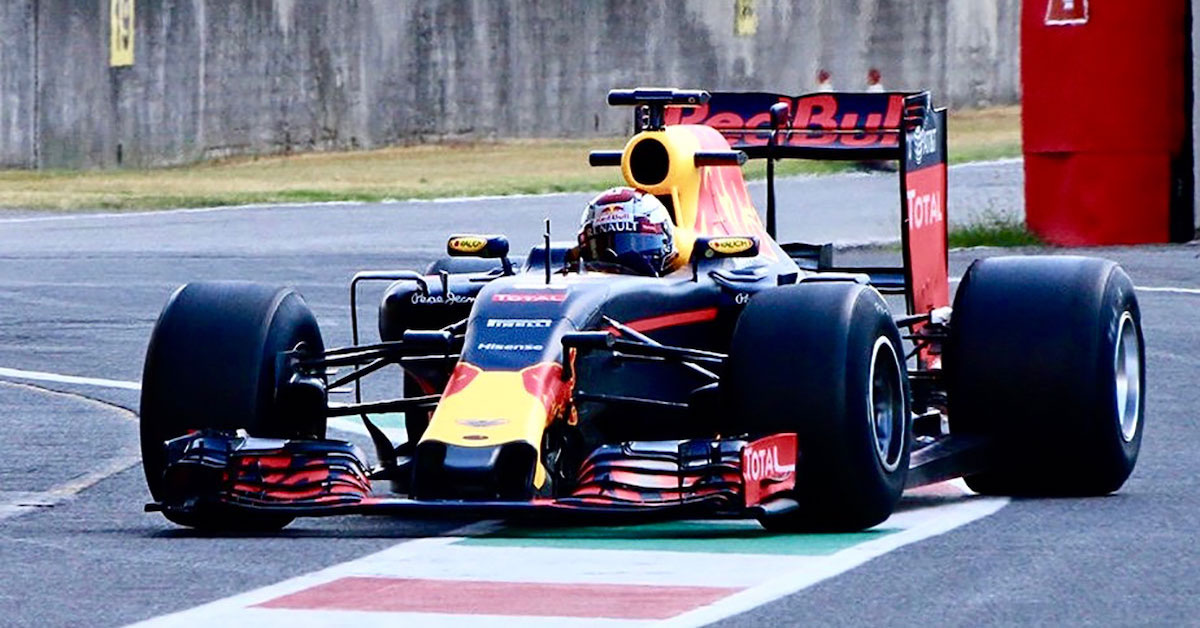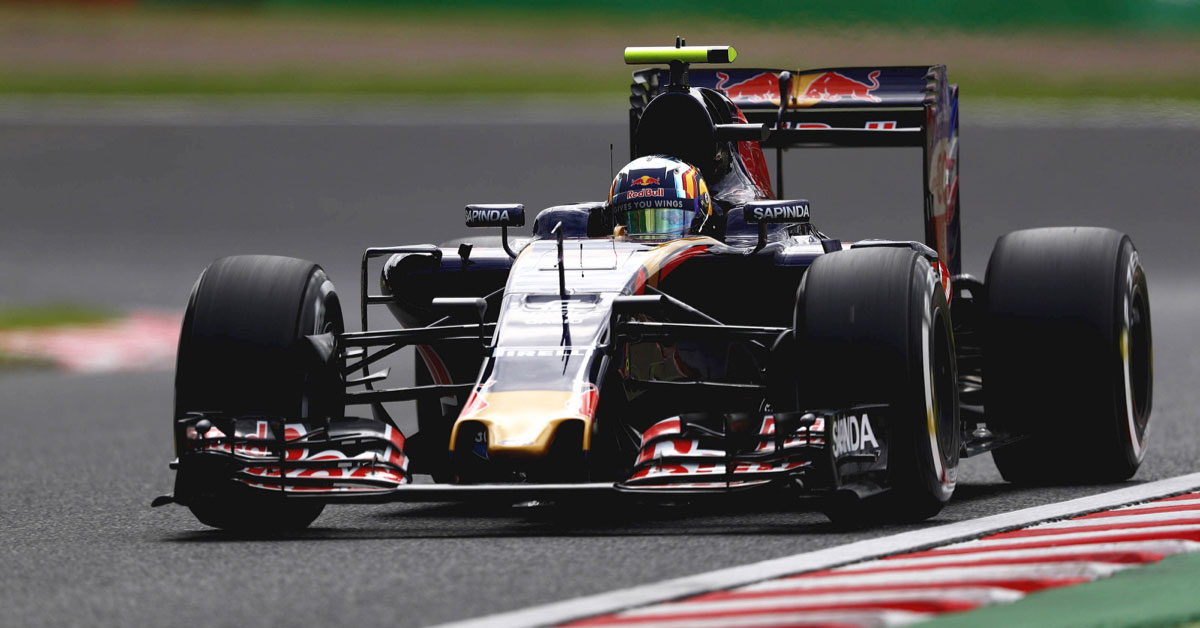Aggressive looks, fat tyres and more speed — the new season is going to be amazing! The revolutionary changes in the 2017 Formula One Technical Regulations are about to unleash the bull under the bonnet of the new STR12 and Toro Rosso fans can’t wait to see it on the track.
For years FIA has been adding performance restrictions to reduce speed and increase driver safety. Next year, some of these restrictions will be rolled back, giving cars a noticeable performance boost, enhanced speed and beautiful new contours.
Speaking to Acronis in a phone interview last week, Toro Rosso Technical Chief James Key said that Toro Rosso is excited by the introduced changes, and the initial tests of the new components showing promising results. “There is a lot to look forward to,” he said.
Technical regulation differences between two seasons (incomplete list).
| 2016 | 2017 | |
| Overall width of the car | 1,800mm | 2,000mm |
| Minimum weight (without fuel) | 702kg | 722kg |
| Front wheels (width) | 305-355mm | 370-385mm |
| Rear wheels (width) | 365-380mm | 455-470mm |
| Wheel diameter | 660mm (dry) 670mm (wet) | 670mm (dry) 680mm (wet) |
| Front wing | 1,650mm span | 1,800mm span, swept back |
| Rear wing | 750mm (width) 950mm (height) | 950mm (width) 800mm (height) |
Tyres
“The first thing you’ll notice in the 2017 cars is the new tyres,” James said. “The tyres and the position of the tyres in relations to the centerline of the car, are quite different. The tyres are much wider compared to what we have now. They should give the car quite a bit more mechanical grip. Most aspects of the new tyres we already understand, but there is still a huge amount to learn. We won’t really know exactly what performance improvement we’re going to get, until we go into testing. So, the tyres are a big one — it’s going to be a very visible change.”


Aerodynamics
“Second – aerodynamics. The aerodynamics is quite different — the cars will look very different and a lot more aggressive compared to the current design. The regulations have been opened up to allow new bodywork features to generate a lot more downforce. Already, the first results from the wind tunnel are very interesting, and Development is refining new things every day. It’s a very exciting time for the aero guys. So, just like tyres, aerodynamics is very visible, it’s a really big change.”
Speed
“Third — is the outcome of the combined development in tyres and aerodynamics: speed. The cars will be a lot quicker, particularly, on the tracks where downforce and grip can win the race, such as in Monaco and Singapore. We will see significantly faster lap times on those tracks. And our drivers will have a much bigger workload to manage in the new cars. So, the third thing you’re going to notice next year will be the improvement in speed. Is the result of larger tyres and different aerodynamics.”
New Engine
Another big change for Toro Rosso will be the return of the Renault engine. Toro Rosso used Renault power units in 2014 and 2015 before the last minute switch to Ferrari engines for the 2016 season. This arguably affected the team’s performance during the first few races, with engineering working around the clock integrating the engine into the STR11.
“Next year Toro Rosso will have the biggest step change in engine performance than any other team,” James said. “Right now we’re running a Ferrari engine, which was good when it was first developed in 2015. But now, it’s well over two years old, well over a year since it was deployed. So, the new engine will give us a big step change. I can’t say what the percentages are at the moment, but it will be quite a lot of lap time for us. We’re going from a ’15 spec to a ’17 spec engine. That’s an enormous difference — it’s going to be big!”
The new engine is also likely to please the fans dissatisfied with the current sound levels.
“The sound of the car is governed by the technology in the engine. When half of the engine is effectively a hybrid electrical system (which is very quiet), it’s obviously very different from the high revs of the older naturally aspirated engines. However, the new regulations that have come into effect in the last few years, particularly around the exhaust system, made the engines sound louder and more like we’re used to in F1. I expect there will be another step improvement in this direction with the STR12 and everyone else’s cars in 2017, as more developed engines are deployed.”
So when are we going to get a glimpse of the new STR12? It won’t be before the start of the next season, James said.
“Some of the larger parts of the car are already complete in terms of design, and things like gearbox and chassis have already been sent to production. However, many other parts are still under development. Since it’s such a new set of regulations, we continue to push the limits of timing. While there are 75-80% of the new STR12 still have to be 100% refined, our development is on schedule. The new car is scheduled to be unveiled just before the first test next year.”
The Importance of Data
Toro Rosso operations fully depend on data and we asked James what’s going to happen with all the data that Toro Rosso accumulated building and running the STR11.
“Data is our most valuable asset,” he said. “This year’s data will be archived but also remain available on our network in Faenza, at the track, and at our wind tunnel in Bicester, England. We’ll have full access to the STR11 data next year.
“We always take available data with us to every race — not only the current year but well beyond the STR11, the data that we accumulated over the last 3-4 years. This is because historical data is very important in motor racing.
“Even though in 2017 we won’t have many reference points as far as the chassis, tyres, and aerodynamics are concerned, we’ll still have a baseline we understand from the STR11 data. The cars change, but the tracks remain the same. There are certain aspects of circuits that we need to account for and historical data provides the intelligence we need. And of course, the engines have been developing since 2014 around the same regulations, so the engine data will be very relevant in understanding how to set up the power unit for each race.
“Our new sponsorship deal with Acronis couldn’t come at a better time. With the astronomical amounts of data processed by Toro Rosso every day, we can’t afford any data loss. We’re right on schedule with the new STR12 and we value Acronis’ input in helping us reach the new goals.”
Image: James Key, Toro Rosso Technical Chief. © Getty Images / Red Bull Content Pool.



